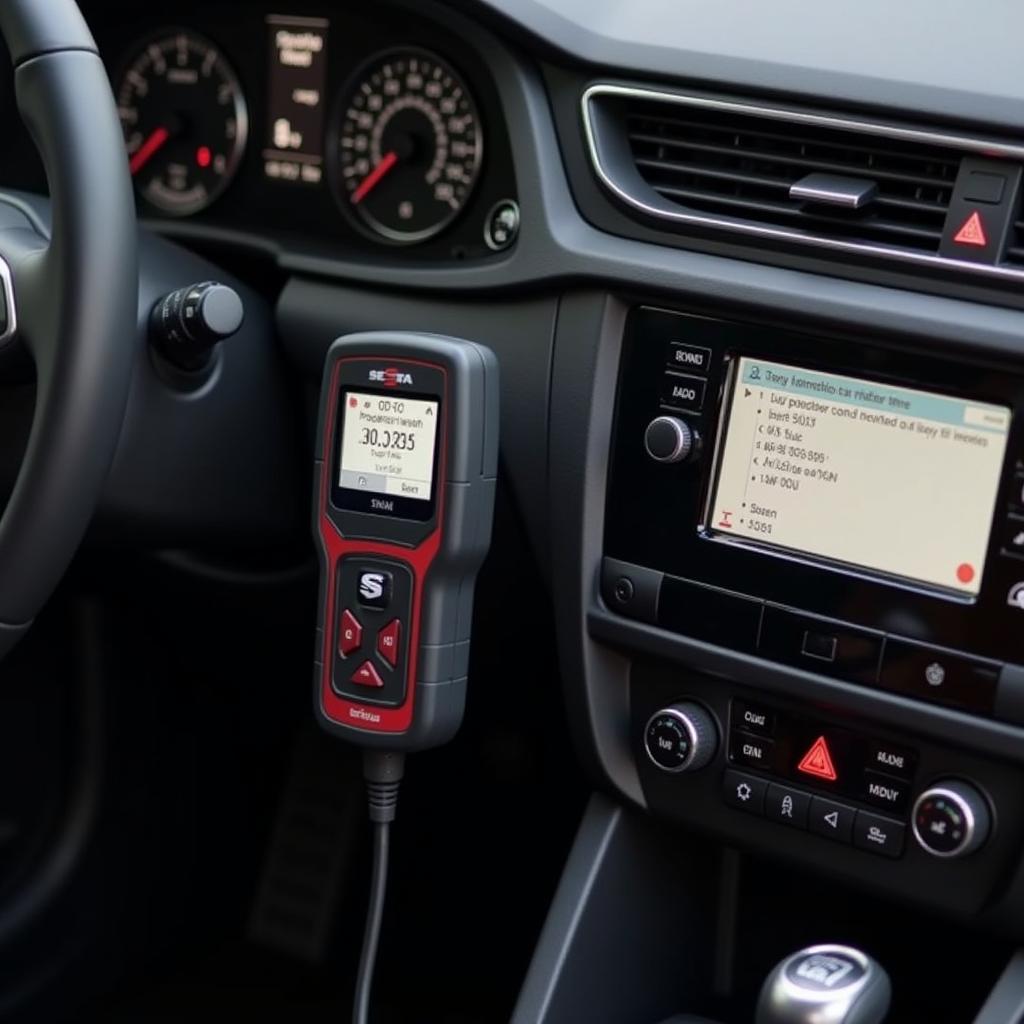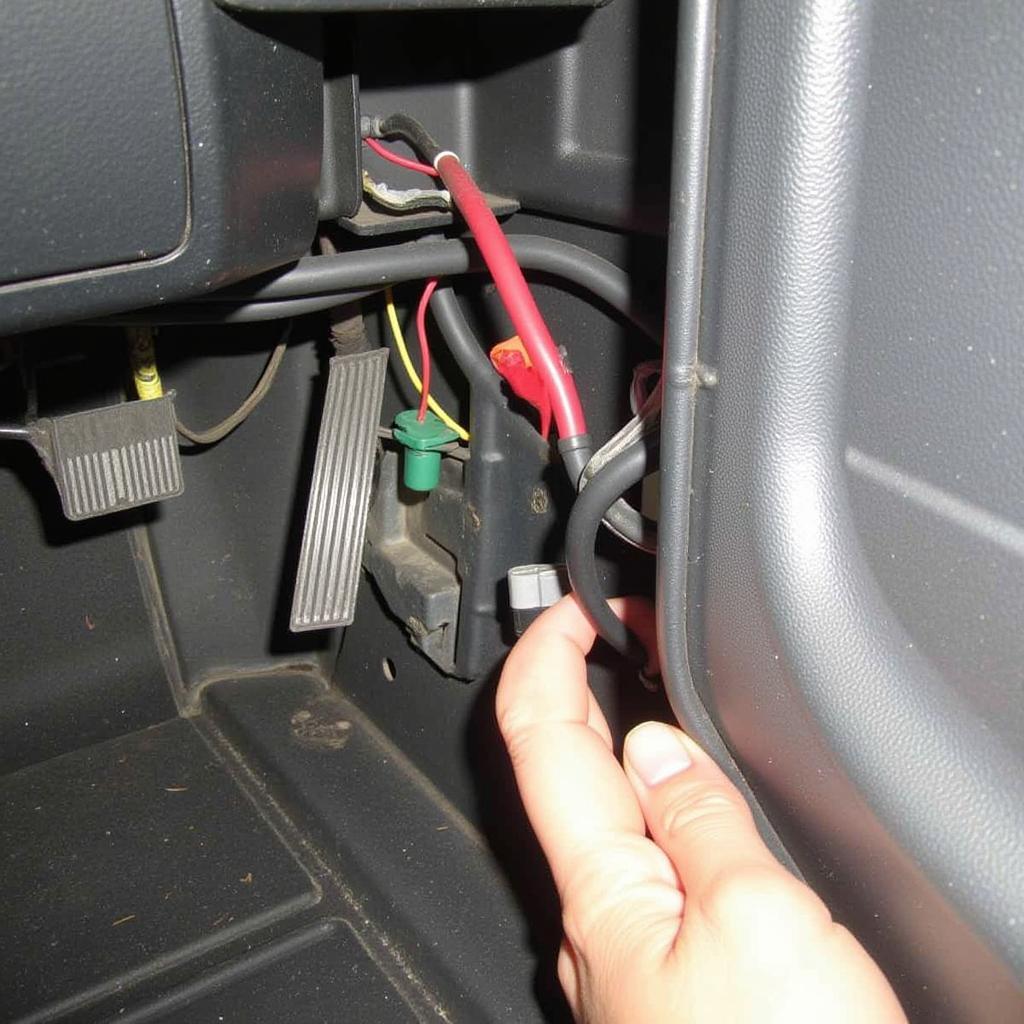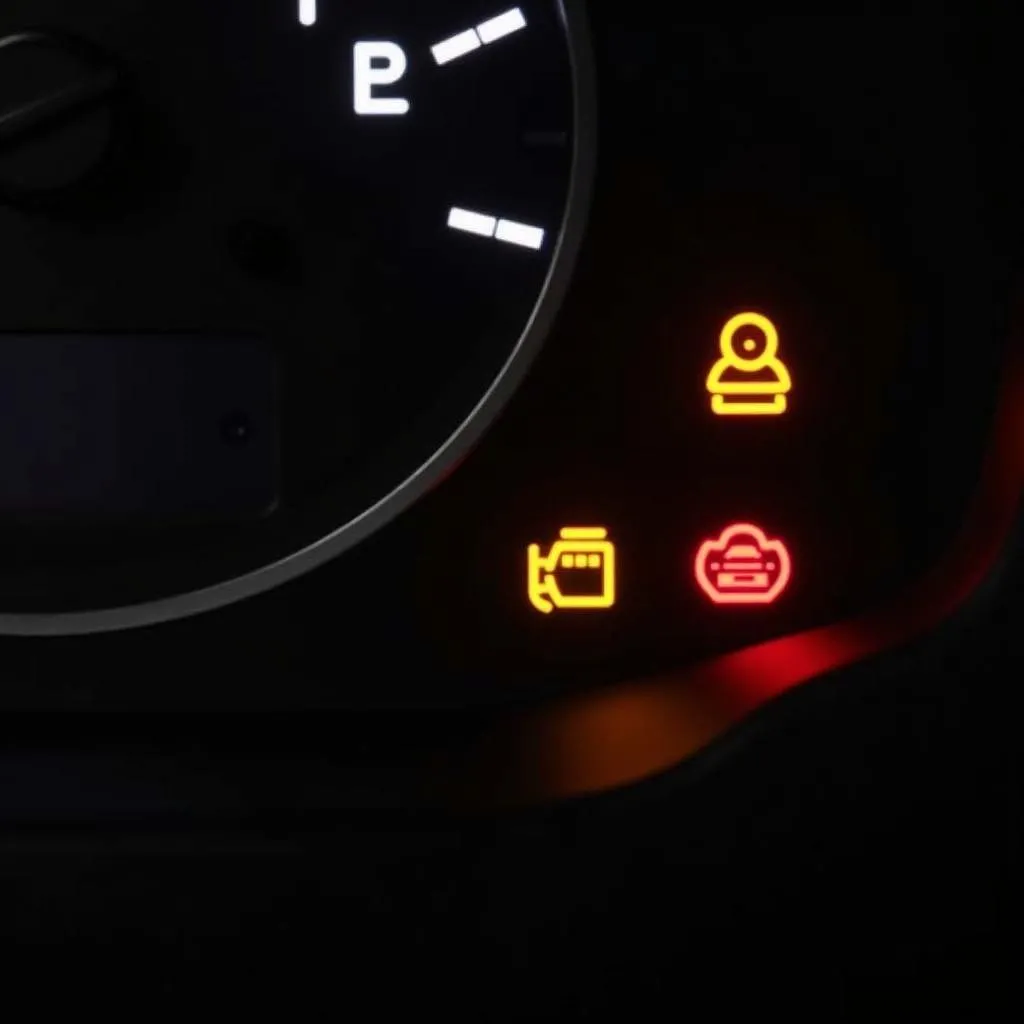The dreaded EPC light. It glows ominously on your Seat Ibiza’s dashboard, leaving you wondering what’s wrong and what to do next. This guide tackles everything about the “seat ibiza dashboard warning lights epc,” providing you with the knowledge to understand, diagnose, and potentially even fix the issue.
Understanding the EPC Warning Light
The EPC (Electronic Power Control) light illuminates when there’s a problem with your Seat Ibiza’s engine management system, electronic throttle control, or other related components. It’s a general warning, meaning it can be triggered by various issues, ranging from minor sensor malfunctions to more serious engine problems. Ignoring the EPC light is not recommended, as it could lead to further damage or even leave you stranded.
Common Causes of the EPC Light
Several issues can cause the EPC warning light to appear on your Seat Ibiza’s dashboard. Some common culprits include:
- Faulty Throttle Position Sensor: This sensor tells the engine control unit (ECU) how much gas you’re giving the car. A malfunctioning sensor can lead to performance issues and trigger the EPC light.
- Brake Light Switch Problems: Believe it or not, a faulty brake light switch can also trigger the EPC warning light. This is often due to a connection issue within the switch.
- Mass Airflow Sensor (MAF) Issues: The MAF sensor measures the amount of air entering the engine. A dirty or faulty MAF sensor can disrupt the air-fuel mixture, leading to poor performance and the EPC light.
- Oxygen Sensor Problems: These sensors monitor the exhaust gases to ensure efficient combustion. A failing oxygen sensor can cause increased emissions and trigger the warning light.
- Spark Plugs and Ignition Coils: Worn-out spark plugs or faulty ignition coils can lead to misfires and trigger the EPC light.
- Vacuum Leaks: Leaks in the intake system can disrupt the air-fuel mixture and cause the EPC light to come on.
Diagnosing the EPC Light
Diagnosing the EPC light requires a systematic approach. While some issues, like a burned-out brake light, can be visually inspected, others necessitate more advanced tools.
Using an OBD-II Scanner
An OBD-II (On-Board Diagnostics) scanner is a valuable tool for diagnosing the EPC light. It plugs into your car’s OBD-II port and retrieves diagnostic trouble codes (DTCs) stored by the ECU. These codes provide specific clues about the nature of the problem.
 OBD-II Scanner Connected to Seat Ibiza
OBD-II Scanner Connected to Seat Ibiza
Remote Diagnostics and Programming
In some cases, remote diagnostics and programming can be utilized to identify and even resolve the issue. This involves connecting your car to a remote diagnostic system, allowing trained technicians to access the car’s data and potentially reprogram certain modules to fix the problem. This can be a convenient and cost-effective solution, especially for software-related issues.
“Remote diagnostics and programming offers a cutting-edge approach to car repair,” says John Miller, Lead Diagnostic Technician at AutoTech Solutions. “It allows us to quickly pinpoint issues and often implement fixes without the need for a physical visit to the workshop.”
Fixing the EPC Light Issue
The solution to the EPC light depends on the underlying cause. Some common fixes include:
- Replacing Faulty Sensors: If a sensor is diagnosed as faulty, replacing it is often the solution.
- Repairing Wiring Issues: Damaged or corroded wiring can be repaired or replaced.
- Addressing Vacuum Leaks: Identifying and sealing vacuum leaks can resolve the issue.
- Software Updates and Reprogramming: In some instances, software updates or reprogramming the ECU can fix the problem.
 Mechanic Working on Seat Ibiza Engine
Mechanic Working on Seat Ibiza Engine
Conclusion
The EPC warning light on your Seat Ibiza shouldn’t be ignored. By understanding its potential causes and utilizing diagnostic tools, you can effectively address the underlying problem and keep your car running smoothly. Don’t hesitate to seek professional assistance if you’re unsure about diagnosing or fixing the issue yourself. Addressing the “seat ibiza dashboard warning lights epc” promptly can prevent further damage and ensure your safety on the road.
“Remember, early diagnosis is key to preventing costly repairs,” adds Sarah Johnson, Senior Automotive Engineer at Car Diagnostics Inc. “Don’t wait until the problem escalates. Get it checked out as soon as the EPC light appears.”
FAQ
-
What does the EPC light mean? The EPC light indicates a problem with the engine management system, electronic throttle control, or related components.
-
Is it safe to drive with the EPC light on? While you might be able to drive for a short period, it’s not recommended to continue driving with the EPC light illuminated, as it could lead to further damage or even leave you stranded.
-
How can I diagnose the EPC light? You can use an OBD-II scanner to retrieve diagnostic trouble codes or seek professional assistance for more advanced diagnostics.
-
Can I fix the EPC light issue myself? Some issues, like replacing a faulty sensor, can be fixed DIY. However, more complex problems may require professional assistance.
-
What is remote diagnostics? Remote diagnostics allows technicians to access your car’s data remotely and potentially fix the problem without a physical visit to the workshop.
-
How much does it cost to fix the EPC light issue? The cost varies depending on the underlying cause and the required repairs.
-
How can I prevent the EPC light from coming on? Regular maintenance, including timely replacement of worn-out parts, can help prevent the EPC light from illuminating.


